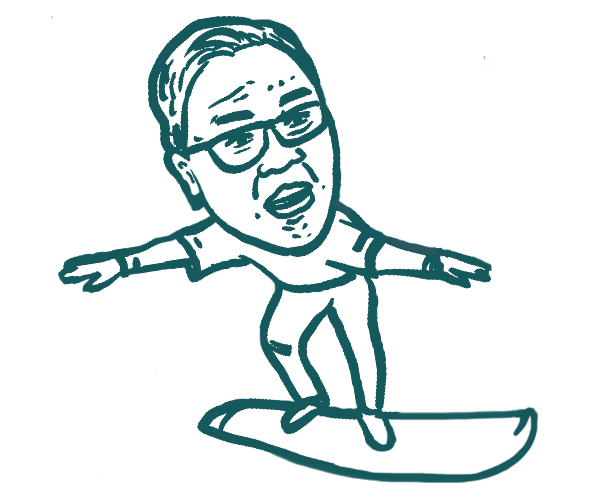The 2022 parliamentary election saw a spectacular vote swing towards Perikatan Nasional in a phenomenon known as the "Green Wave".
Building on PAS’ gains in 2018, the PN coalition dominated all the ballot boxes in Kelantan, Perlis and Terengganu, while failing to win only one parliamentary seat in Kedah.
Inroads were made in other states, most notably in Penang and Selangor which are considered Pakatan Harapan strongholds.
Now that half a year has passed since GE15, all eyes are on whether PN’s "Green Wave" will gather more momentum and flood the “red states” during the upcoming state elections or will it be reduced to a harmless ripple.
Using GE15 voter data, we look at several scenarios for the upcoming state elections. Later, with our calculator, you can experiment with the data and make your own predictions.
What the GE15 results tell us
The Election Commission (EC) records parliamentary election data in a way that makes it possible to discern how people voted at the state constituency level.
The following section will use this data to establish the gains that PN had made in Harapan-held states, both at the parliamentary and state constituency level. We will also discuss what could have happened had there been concurrent state elections in 2022 without split voting.
What might happen in the upcoming six state elections?
The upcoming six state elections will take place in a vastly different political landscape - PN will now have to face the new Harapan-BN pact.
The Harapan-BN pact is betting on their supporters to not only remain loyal but also vote for each other against a common enemy - PN.
With the EC’s granular data, it is possible to estimate the number of seats the Harapan-BN pact and PN might win through a calculator such as the one below.
The default turnout rate mimics the reduction in votes received by all three coalitions during the Johor election in March 2022, when compared to GE15.
During that state election - the first polls after “Undi18” - Harapan received 47 percent less votes than it did during GE15 in Johor alone. As for PN, the reduction was 23 percent while the number of votes received by BN remained relatively unchanged. During the Tioman election, PN’s votes were down by 23 percent compared to GE15 as well.
This meant that if the Johor election had been held concurrently with GE15, Harapan would have likely been able to win 29 seats and formed the state government with a simple majority.
Accounting for a reduction of turnout for this article was necessary because turnout for state elections or by-elections have traditionally been lower than general elections.
In the following section, we explore the best or worst case scenarios for PN in the upcoming state elections, if the turnout rate matches that of the 2022 Johor election.

Mission impossible states?
During GE15, there were three states where PN won every parliamentary seats - Perlis, Kelantan and Terengganu. In Kedah, PN won all but one.
PN is strongest in Kelantan and Terengganu where they won nearly two-thirds of the popular vote.
Kelantan has been a PAS bastion since 1990. If the state election had been held concurrently with GE15, PN would have likely won 42 out of 45 seats.
In the upcoming state election, can the BN-Harapan pact finally stir the waters in Kelantan? Not likely.
Why turnout matters
GE15 saw a record 15.6 million votes cast, up 30 percent from the previous election. This contributed to the "Green Wave" in the northern states.
However, as discussed earlier, voters tend to be less motivated during a state election and a reduced turnout can drastically change the outcome of the vote as demonstrated during two different elections in Johor during 2022.
Universiti Sains Malaysia political sociology professor Sivamurugan Pandian, who recently conducted voter sentiment research in Kedah, believed Harapan and BN will likely face more difficulties in mobilising voters.
The main challenge, said Sivamurugan, is convincing coalition loyalists to accept the working relationship between the two former bitter rivals.
"We do expect party loyalists to either cast a protest vote or decide to stay home during the election," he told Malaysiakini.

Another advantage PN has is the sentiments of the younger “first-time” voters, thanks to automatic voter registration. They are often stated as a key reason for the "Green Wave" in the northern states.
Political scientist Bridget Welsh’s research had led her to suggest that GE15 results showed that PN’s support is concentrated among younger voters compared to older ones.
However, recently enfranchised voters, despite their eagerness to vote during GE15, have yet to develop strong political loyalties. They will be key constituents for canvassing by all contestants, said both Sivamurugan and political scientist Wong Chin Huat.

Start with a ripple
Apart from mobilisation of voters to ensure a healthy turnout, both the Harapan-BN pact and PN have evidently identified key battleground states where they hope to generate a swing.
In late April, leaders from Harapan and BN mingled with crowds at the federal level Hari Raya open house in Alor Setar, Kedah to signal the importance of the state to the pact.
Subsequently, national level PN leaders attended several Aidilfitri celebrations in Selangor and appeared in rallies in the areas which turned “green” during GE15, often with Kedah Menteri Besar and state PN leader Muhammad Sanusi Md Nor as its main speaker.
Sivamurugan said Kedah has a history of being a swing state, having changed hands in three consecutive elections since 2008.
But this time, the professor believed that PN will have the upper hand due to Sanusi’s popularity, based on his recent research.
“Sanusi is the key factor. The image being portrayed is that ‘Sanusi is Kedah’ and ‘Kedah is Sanusi’, just as lawmaker Shahidan Kassim was very prominent in Perlis.
“For Harapan and BN to pose a serious challenge, they will have to identify a credible and reputable leader. With good candidates, an effective machinery and the ability to articulate local issues, then Harapan and BN might put up a decent fight in Kedah,” he added.
As for Selangor, Sivamurugan opined that since most of the seats have mixed ethnicities, Harapan and BN will have the advantage.
“That is unless internal sabotage widens and gives more room for PN to make inroads,” he said.
READ MORE: Part 2: GE15: Was the ‘Green Wave’ powered by young voters?


